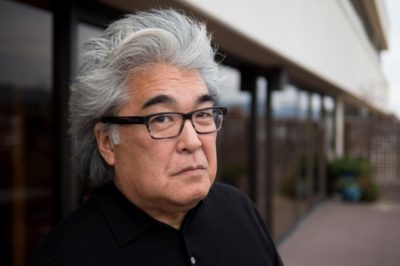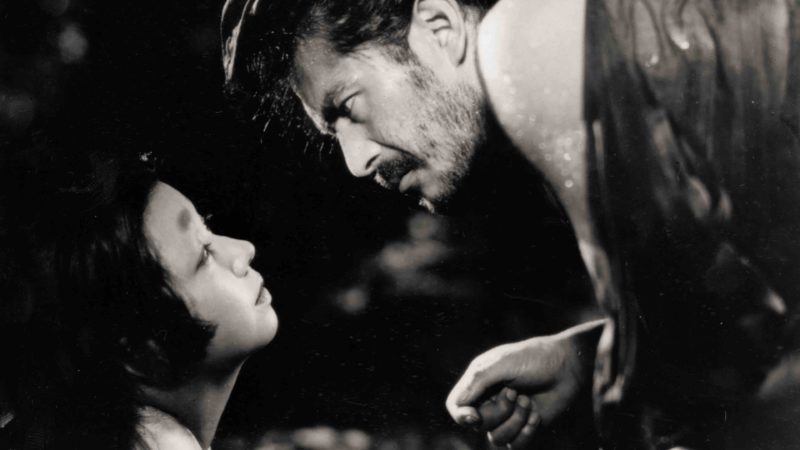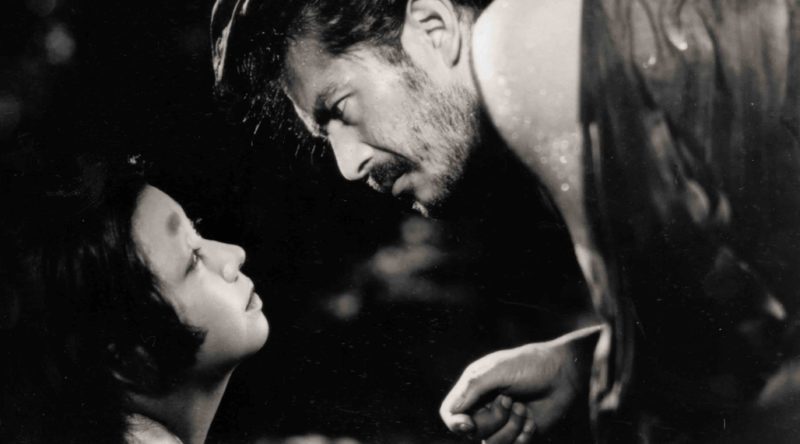INTERVIEW: Oscar-winning director turns to famous samurai actor as new subject

Director Steven Okazaki, an Academy Award winner, has crafted a thoughtful, engaging documentary about legendary actor Toshiro Mifune, who helped bring the samurai genre to the big screen in the 20th century. Working with director Akira Kurosawa, Mifune became the cinematic hero of such films as Rashomon, Seven Samurai and Yojimbo.
Okazaki’s documentary, titled Mifune: The Last Samurai and narrated by Keanu Reeves, explores not only the movie roles and international success of the famed actor but also the samurai film as a cinematic genre and the tumultuous events of the 20th century in Japan. The film, which is currently playing at New York City’s IFC Center, brings together interviews with a wide variety of cinephiles, including Steven Spielberg, Martin Scorsese, Kyoko Kagawa, Yoshio Tsuchiya and Takeshi Kato.
“Well, it was really kind of happenstance,” Okazaki said recently in a phone interview. “I was in Tokyo looking for a project, and I was meeting with a producer. And he said, ‘Well, if you had your wish, what would you want to do?’ And I said, ‘I’d love to make a film about the history of the samurai film from the silent era to the present.’”
The director wanted to view the early samurai films that are hard to find and rarely screened. When talking with this producer friend, Okazaki soon found out that finding those movies would be an obstacle. They were spread out across several Japanese studios, and he would need a great deal of cooperation.
Instead, his friend told him about another project with a different producer that looked at Mifune’s influence on the genre. Almost immediately Okazaki wanted to set up a meeting and tell the producing team he was the director for the job.
“So I got to meet the producer, and a few days later, he said, ‘Yes,’” Okazaki said. “He had come up through Mifune’s production company, and he was nearing the end of his career and felt like he really wanted to do something about Mifune as one of his last projects. And so normally lots of times people will come up with a great idea, and then nothing happens. But I could see his determination to do it.”

When Okazaki began researching Mifune and samurai films, he was surprised how scarce the early movies were. “It’s devastating to know that there’s so much film history that is never going to be recovered,” he said. “For obvious reasons, so much was lost during World War II, but also just it’s a culture of the now. People did not take care of the old films, and so it’s very rare. They usually turn up in places you wouldn’t expect them, but there’s amazing creativity in some of the films. … That’s the one thing great about the silent era; you see the joy of filmmaking really wide open.”
In Mifune: The Last Samurai, the story begins before the actor’s rise to international fame. The narrative looks at how the samurai genre began, how the events of World War II changed Mifune’s life and the cinematic world, and then how this iconic actor rose through the ranks to stardom.
“Mifune, he didn’t really do in-depth filmed interviews,” Okazaki said. “They’re mostly talk-show-ish superficial promotions kind of interviews. He wrote in a few short bios of just two or three pages, and he always talks about his childhood in Manchuria and his experience during World War II watching young kamikazes go off to their death. With his friends, I mean, after a few cups of sake, apparently, it was a big talk for him in those years.”
One of the challenges making Mifune: The Last Samurai was finding and interviewing the many people who either worked with Mifune or were influenced by the actor.
“Well, frankly, I was just happy to get as many people as possible,” Okazaki said. “Most of the people went through World War II, and they’re all roughly around the same age. So many of the people we would love to have in the film have been gone for a long time, or they’re too old to be in the film. So we really combed the credits and said, ‘Is this person alive?’ Apparently it’s harder to be a crew person, so we couldn’t find very many crew people and sort of behind-the-scenes people. Luckily we found a couple of the very important actors. … We had initially no one from Seven Samurai, and then we really combed the credits and came up with the actor who … had a bit part in Seven Samurai. And he also played Godzilla, but he sort of ended up in the film because at that point we hadn’t found anyone else.”
An early cut of the documentary did not have many voices talking about the influence of the actor, so Okazaki employed the help of Spielberg and Scorsese to provide some context. “Obviously they love the films, and Kurosawa is an idol,” he said. “They described Mifune in just really appreciative terms, and that’s sort of missing from the way the Japanese describe him. So I think it gives you a better picture of … his influence on them and film in general.”
Okazaki is a director best known for his documentary shorts, including White Light / Black Rain: The Destruction of Hiroshima and Nagasaki, The Mushroom Club and The Conscience of Nhem En. He has been nominated four times for the Academy Award and won for 1991’s Days of Waiting.
“I love doing shorts because it’s sort of one arc with the story, and I think with features it’s sort of building upon building to a point,” he said. “But there’s a great frustration with shorts in that it’s very hard to get them seen. In a film festival, they’re usually lumped together in a special program. It’s one of the lower rungs of filmmaking is the shorts, but I love the form. The challenge with feature films is holding people’s attention for 80 to 100 minutes, and your story has got to hold. You’ve got to keep them interested. You have to grab them once and then hold them. They’re challenges in different ways. I wish there was a bigger audience for shorts because, as I said, I do like making them. I often feel like not everything deserves an hour or 90 minutes. Some things just work well being told in a short form.”
When Mifune: The Last Samurai opens in New York, and then expands across the country, Okazaki hopes audiences who love the actor’s work will turn out for a trip to the “good old days.”
“A lot of people saw these films when they were in college, so I hope it pleases them,” he said. “I think it will, and I hope we can reach some new audiences, of people just discovering it who will go off [to] Netflix and see a great Japanese film, or see a great French film, or whatever and just sort of open up their concept of film. Some of these are epic dramas with no special effects. It’s all just great cinema where people had to do everything without computers, and I think the goal is maybe a few people can go back to these films because I guarantee they’ll be delighted and enjoy them. They’re hard to match, and Mifune was really unique.”
By John Soltes / Publisher / John@HollywoodSoapbox.com
Click here for more information on Mifune: The Last Samurai.

